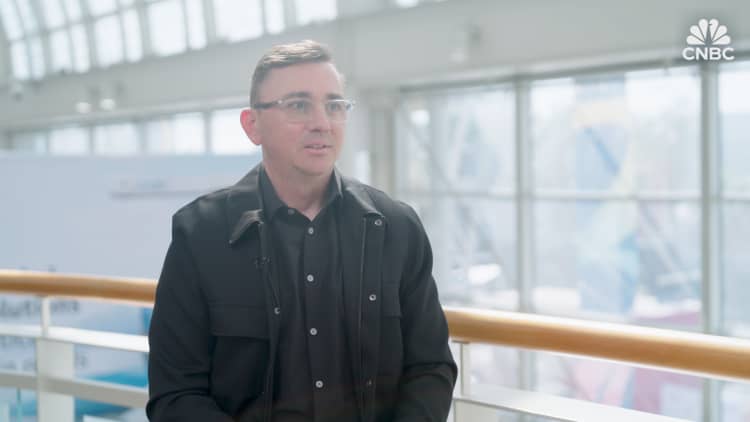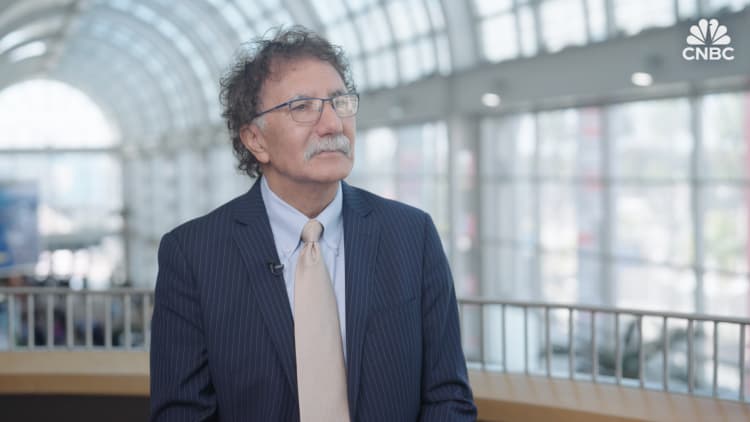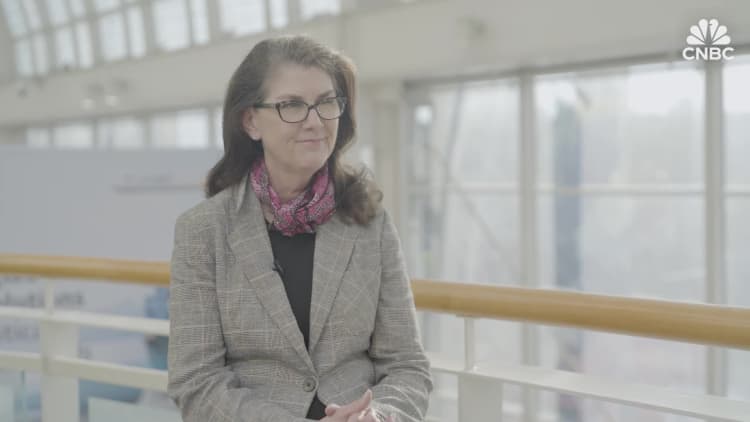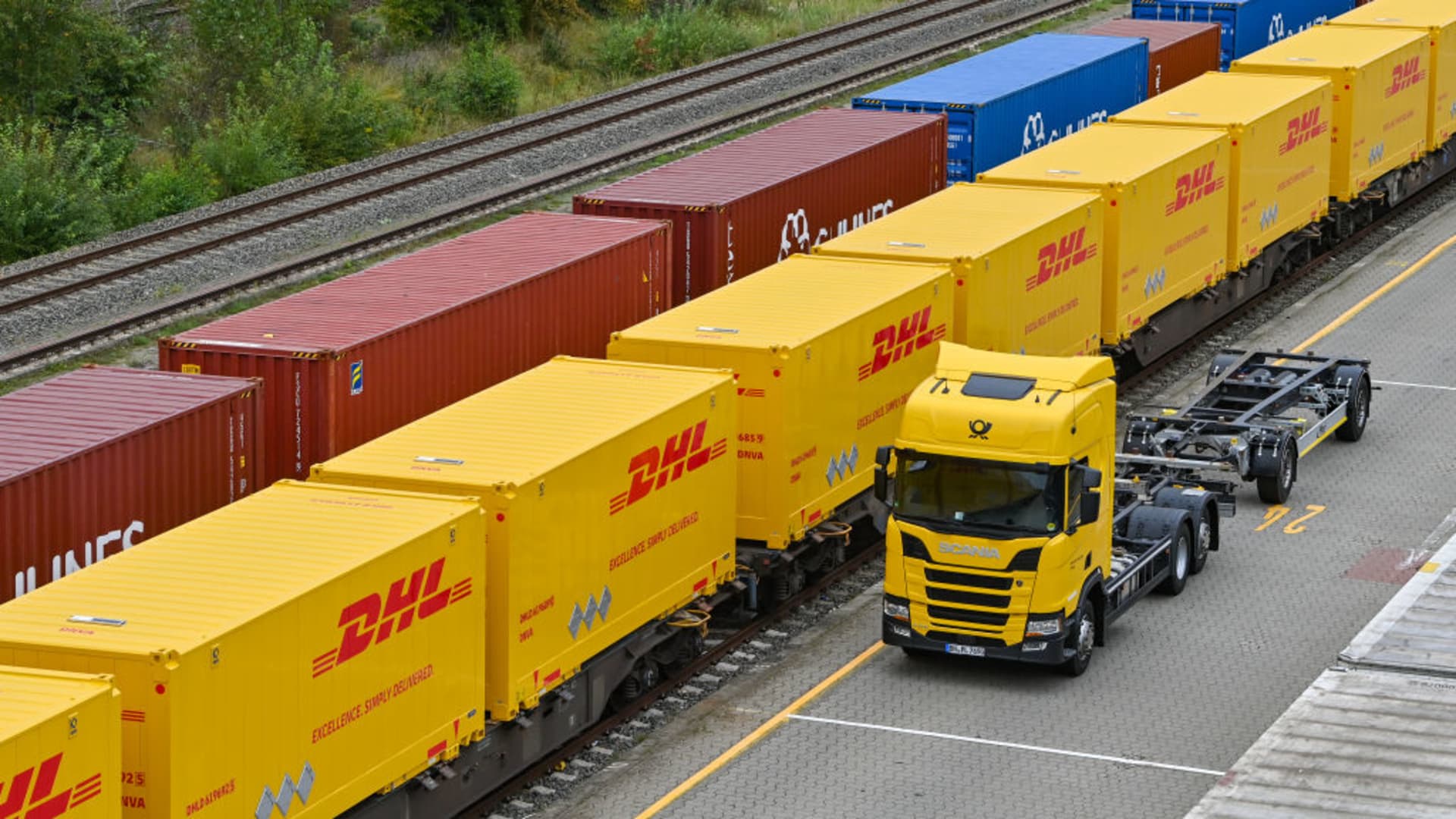Containers are loaded from freight trains onto trucks.
Picture Alliance | Picture Alliance | Getty Images
A logistics strategy called transloading, used by trucking companies during the pandemic to ease the container backlog, is increasing in popularity again after U.S. West Coast ports have started to receive higher volumes of containers that are being diverted away from the East Coast.
Transloading is the process of moving freight from truck to rail or rail to truck. Logistics companies tell CNBC that U.S. importers are requesting this type of service more frequently as they move more freight on new routes as a result of the Red Sea diversions and the Panama Canal drought restrictions.
“We’re seeing a double-digit shift from cargo moving away from the East Coast and to the West Coast,” Michael Aldwell, executive vice president of sea logistics for Kuehne + Nagel, told CNBC, citing the issues seen in the Panama Canal and Red Sea, as well as the threat of a potential labor strike at the East Coast and Gulf ports.
The February Transportation Intelligence report from economic forecasting firm FR showed that U.S. imports moved inland via transload in 2023 were between 65-70% percent, compared to 2021 when it was less than 60%.
Chris Sikora, director of port services for CH Robinson, said the logistics company has increased its transloading staging at the ports around the country as retailers and suppliers are favoring the smaller loads of moving products.
“The liability of not enough space or too much space has created this,” Sikora said. “We are moving items that can range from kayaks to apparel.”

Retailers can save $500-$1,000 in transportation and soft labor costs related to imports through transloading, according to Sikora, who added that the acceleration of e-commerce and smaller business customers importing in the range of 3,000 containers annually look to solutions like transloading.
Logistics executives say the increased use of transloading comes as U.S. importers are dispersing their freight to international multiple ports in an effort to be nimble. Instead of sending containers into one port where the contents are then divided and dispersed, the freight is divided overseas and placed in multiple containers sailing to different ports, closer to respective distribution centers. The smaller freight loads save importers both time and money, logistics experts said.
The current global supply chain issues should fuel more transloading growth.
“Take the opportunity while there’s no congestion to move some of your cargo so you establish a transload supply chain via the West Coast, that way you’re not trying to set it up in the middle of a crisis,” said Aldwell.
Picture Alliance | Picture Alliance | Getty Images
Tim Robertson, CEO of DHL Global Forwarding Americas, said transloading has become a viable offering to build flexibility into supply chain. The company now has multiple transloading operations on both coasts.
The shift in the volume of freight being moved from the East Coast to the West Coast was first highlighted in February in the ITS Port Rail Ramp Freight Index.
Paul Brashier, vice president of drayage and intermodal at ITS Logistics, told CNBC it has seen a significant increase in demand, and the company is bringing on capacity that was mothballed post-Covid to service it.
“We’re being asked to onboard even more of that capacity to service our clients for the third and fourth quarter surge when it does come,” Brashier said. “We’re talking about a 75-80% increase in transloading demand.”
Sikora said the concept of shippers bringing containers into multiple ports closer to their end customers and transloading can be seen in the Department of Transportation’s Import data.
“It takes a third less time, less transportation moves, and offers clients the ability to be nimble,” Sikora said. “Shipper demand has jumped noticeably with their use of various distribution centers.”
The rash of global supply chain issues are adding to calls for an early peak shipping season push by importers and increased use of transloading.
Bryan Kempisty, CEO of PortX Logistics, told CNBC it usually has an 18-day lead time to monitor for supply chain slowdowns and disruptions, and give customers advanced notice to make decisions on containers needing to be diverted to another port, or freight transloaded.
He said the disruptions from the Suez Canal and Panama Canal have contributed to an almost 20% increase into the West Coast ports. “If you were used to a 30-day transit time and now it’s a 60-day transit time, peak season could conceivably move up a month to June, just because of the disruptions in the marketplace. This will also influence transloading decisions,” said Kempisty.
Matt Schrap, CEO of Harbor Trucking, which represents truck companies that service the West Coast ports, says typically 30% of the containers coming in are bound for the railroad and 70% are moved by truck.
“Almost half of that is going to be transloaded,” said Schrap. “For our ports, transloading containers is always going to happen and we have the capacity to do more.”

Transloading can increase the profits of trucking companies who offer the service because it reduces costs associated with container usage and fuel, as well as increases the efficiency of resources.
Bruce Chan, director of global logistics & future mobility for Stifel, said the logistics industry is at a major crossroads because of the structural shift in how retailers and importers are thinking about their supply chains.
“From a supply chain standpoint, efficiency standpoint, and ESG standpoint, West Coast transit makes sense,” Chan said. “Logistics companies need to be nimble in managing the complexity of the changing supply chain so they can be stickier with the big shippers with various offerings and investments.”
He added that given the increase in the number of transportation nodes in the logistics system, bringing freight into as many as five different ports should be a positive for transport companies including J.B. Hunt, ITS, and CH Robinson.
Susquehanna International Group analyst Bascome Majors cited J.B. Hunt, as well as two other large intermodal providers, Hub Group and Schneider, as the companies “that would benefit more than anyone in publicly traded transports from an incremental East-to-West Coast port shift from labor disruption and an uptick in transloading off the West Coast.”
In addition to the intermodals like Schneider and JB Hunt, Union Pacific railroad should benefit from the freight shift, according to Jason Seidl, Cowen Group air freight and surface transportation analyst.
“This is an opportunity for Union Pacific to deliver and grow market share based on delivering a product that is reliable, easy to use, and most of all consistent in transport,” said Seidl. “The biggest hurdle for intermodal is improving the consistency of their business. Truckload rates are still in the doldrums so service is key.”
Chan said intermodal investments made by Schneider and Knight-Swift can make them more attractive for long-term investors as compared to the more cyclical over-the-road truckload space, which disproportionately attracts hedge funds looking for short-term trading opportunities.
“On the intermodal shift, we are seeing drayage providers like Universal Logistics Holdings have a pretty sizeable West Coast drayage presence and can benefit from positive tailwinds,” Chan said. “And for trucking overall a recovery in cross-country moves because they necessarily cost more.”
The West Coast container volume rebound will also have a ceiling. “We probably don’t get to the historical 10-year levels of West Coast market share versus East Coast share,” Chan said. “But I think we normalize closer to a 50/50. Over the short-term, I see a lot of diversion over to the West Coast as a result of the International Longshoremen’s Association strike threat, and the Red Sea and Panama Canal diversions.”
But the freight industry is near the floor of contract rates after an industry recession, so while Chan said 10%, 20%, or 30% move at these levels are significant, rates have dropped considerably more in recent years, an important factor for investors to keep in mind.
“I do think we’ll see a recovery, but I think it will be muted,” Chan said. “We are still in an overcapacity market. There needs to be a correction in trucking capacity.”
Mexico’s growing cross-border trade profile
The transloading opportunity is also increasing in Mexico.
“We are seeing more and more interest in cross border,” Seidl said. He cited a decision by the Surface Transportation Board to approve the Canadian Pacific-Kansas City Southern merger last year, which has created more and better options for shippers. “You also have Genesee & Wyoming’s rail-ferry service going strong between the ports of Mobile, Alabama, and Coatzacoalcos, Veracruz, across the Gulf of Mexico.”
D’Andre Larry, head of intermodal for Uber Freight, a subsidiary of Uber Technologies, told CNBC customers are asking about the growing market of cross-border traffic.
“We have a large, thriving cross-border Mexico business unit that does a lot of traffic into and out of Mexico,” said Larry. “We do transloading at the border. We do intermodal out of Mexico, we do truck out of Mexico. Customers look to intermodal for ways to capture both the dollar and carbon savings.”


